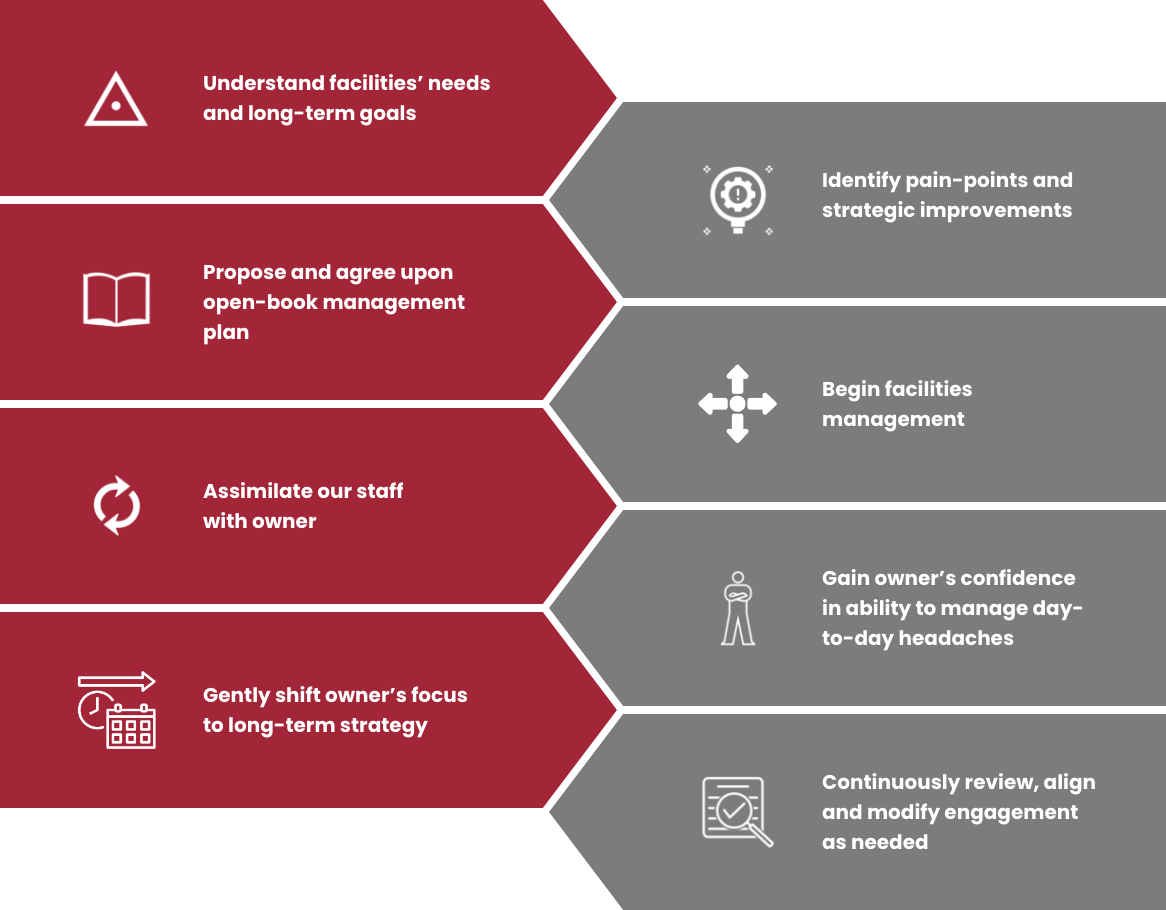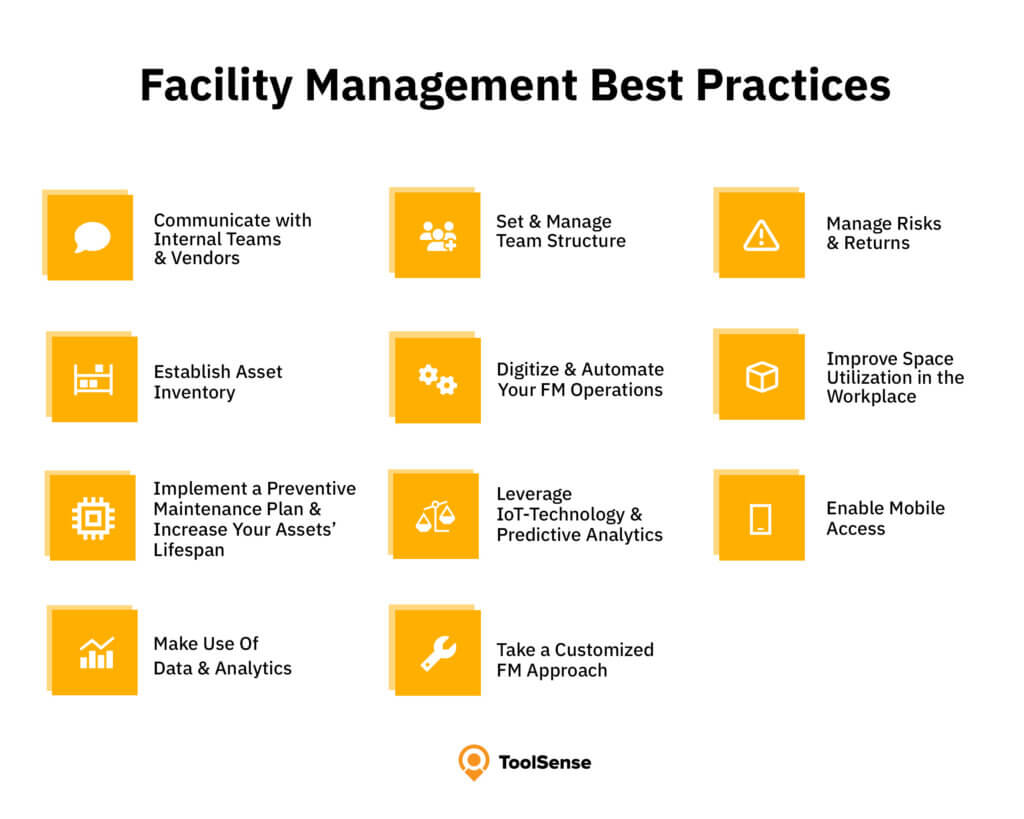Facility Management-- Important Services for Reliable Workflow
Wiki Article
Secret Fads Forming the Future of Facility Administration in 2024
As we look ahead to 2024, the landscape of center monitoring is positioned for significant makeover, driven by numerous key patterns. The integration of clever building innovations and a shift in the direction of data-driven decision-making assurance to boost functional performance while prioritizing sustainability in practice. The introduction of crossbreed job designs is reshaping workplace atmospheres, demanding ingenious design options that provide to advancing worker demands. In the middle of these changes, the concentrate on passenger health continues to get grip, underscoring the importance of a healthy workplace. How these trends will certainly materialize in method continues to be a critical question for sector specialists.Smart Building Technologies

Smart structure modern technologies encompass a broad variety of systems, consisting of smart lights, cooling and heating controls, and safety systems. By incorporating these systems, center supervisors can keep an eye on and change criteria in real-time, causing significant reductions in energy waste and functional prices. For example, wise sensors can spot tenancy levels and readjust lights and temperature appropriately, guaranteeing that energy is just used when needed.
Furthermore, these innovations help with enhanced information collection, enabling companies to track use patterns and identify opportunities for more renovations. The execution of wise building technologies not just adds to sustainability goals but also produces healthier job settings that can improve worker productivity and satisfaction.
As we relocate into 2024, the adoption of smart structure innovations will likely accelerate, reflecting a wider change in the direction of more smart, responsive, and lasting facility management techniques.
Data-Driven Decision Making
Significantly, organizations are leveraging data-driven choice making to enhance center monitoring practices. By harnessing data analytics, center managers can derive workable insights that considerably enhance operational performance and source appropriation. The combination of innovative technologies, such as IoT sensing units and real-time monitoring systems, makes it possible for the collection of substantial amounts of information on structure performance, occupancy prices, and power usage.This riches of info allows center supervisors to determine fads, predict maintenance demands, and proactively address concerns before they intensify. Predictive analytics can anticipate devices failings, minimizing downtime and fixing prices. Furthermore, information visualization tools help with better interaction among stakeholders, ensuring that notified decisions are made collaboratively.
In addition, data-driven methods enhance critical planning by enabling center supervisors to examine the performance of current techniques and make notified options pertaining to investments in innovation or framework. As companies increasingly prioritize functional quality, data-driven decision making is positioned to come to be a foundation of effective facility administration approaches in 2024 and beyond. Eventually, the capacity to utilize data effectively will encourage companies to produce extra reliable, effective, and resistant facilities.
Sustainability and Environment-friendly Practices
The focus on data-driven decision making normally lines up with the growing concentrate on sustainability and eco-friendly practices within center monitoring. As companies progressively prioritize environmental duty, facility supervisors are this article leveraging analytics to maximize source usage, minimize waste, and reduce carbon impacts. This tactical technique allows the assimilation of energy-efficient systems, such as LED lighting, clever cooling and heating controls, and renewable resource sources right into center operations.Additionally, the execution of sustainable practices expands beyond energy consumption. Center managers are promoting and adopting green products recycling efforts to develop a circular economic climate within their facilities. This not only improves the ecological profile of the organization but likewise cultivates a culture of sustainability amongst employees.
Conformity with environmental laws is an additional crucial element driving the fostering of environment-friendly methods. By utilizing information analytics, center supervisors can keep an eye on compliance metrics and identify areas for enhancement, making certain adherence to worldwide and regional sustainability criteria.
Hybrid Work Models
A substantial shift towards hybrid work versions is reshaping the landscape of center management in 2024. This paradigm incorporates in-office and remote work, demanding a reevaluation of room use, resource appropriation, and employee interaction methods. Organizations are increasingly recognizing the value of adaptable work spaces that accommodate varied requirements and choices.Facility managers need to adapt by applying functional workplace layouts that sustain joint initiatives while giving areas for focused job. This includes the assimilation of modern technology to facilitate seamless communication and partnership amongst in-office and remote staff members. Smart building solutions, equipped with analytics and sensing units, enable real-time surveillance of space use, enabling organizations to maximize their environments efficiently.
Additionally, hybrid work designs stress the requirement for reliable facility administration that prioritizes staff member experience. This incorporates not only technology and room design yet also the development of plans that advertise a balanced work-life dynamic. As firms browse this shift, the function of facility management becomes essential in developing a dexterous workplace that fosters efficiency and drives business success. Essentially, the crossbreed work design is transforming facility management, urging a proactive approach to fulfill the advancing needs of the labor force.
Boosted Owner Health
As companies embrace hybrid job designs, an increased focus on occupant wellness is becoming indispensable to center monitoring techniques. Facility Management. This change recognizes next that a completely satisfied and healthy workforce directly influences productivity and retention rates. Facility managers are now prioritizing atmospheres that advertise physical and psychological wellness, integrating components such as natural illumination, biophilic layout, and obtainable wellness resources

Innovation plays an important function in this advancement. Smart building systems can keep track of environmental aspects and readjust settings in real-time, making sure optimum comfort levels - Facility Management. Comments mechanisms, such as tenancy sensing units and worker surveys, allow center managers to constantly refine wellness campaigns based on passenger demands.

Verdict
In 2024, the future of facility management will be significantly influenced by the combination of wise building modern technologies and data-driven decision-making, cultivating enhanced operational efficiency. These patterns jointly highlight the advancing landscape of center administration in action to modern obstacles and opportunities.Center supervisors are adopting green products and promoting reusing initiatives to create a round economic climate within their centers.A considerable change in the direction of hybrid job versions is reshaping the landscape of facility management in 2024.Furthermore, hybrid job versions highlight the requirement for reliable center administration that prioritizes staff member experience.As companies embrace hybrid job models, an enhanced focus on occupant health is becoming indispensable to center monitoring techniques.In 2024, the future of center administration will certainly be considerably influenced by the combination of smart structure modern technologies and data-driven decision-making, fostering enhanced operational effectiveness.
Report this wiki page